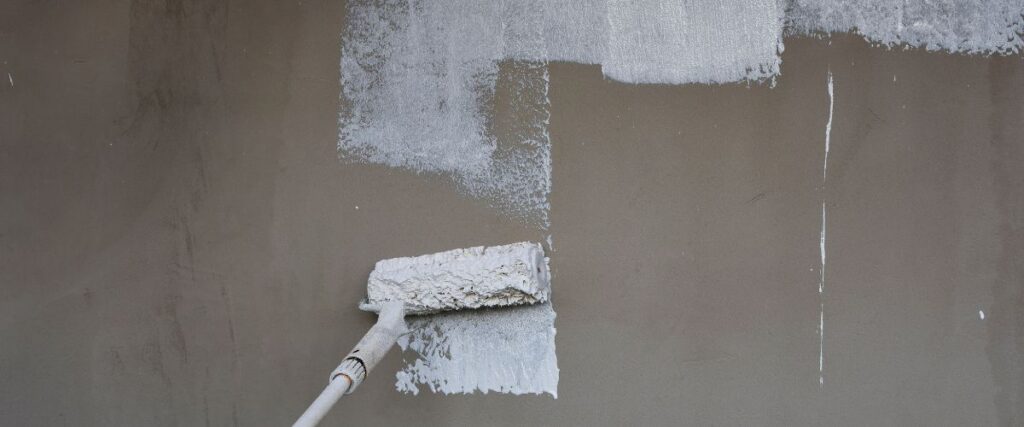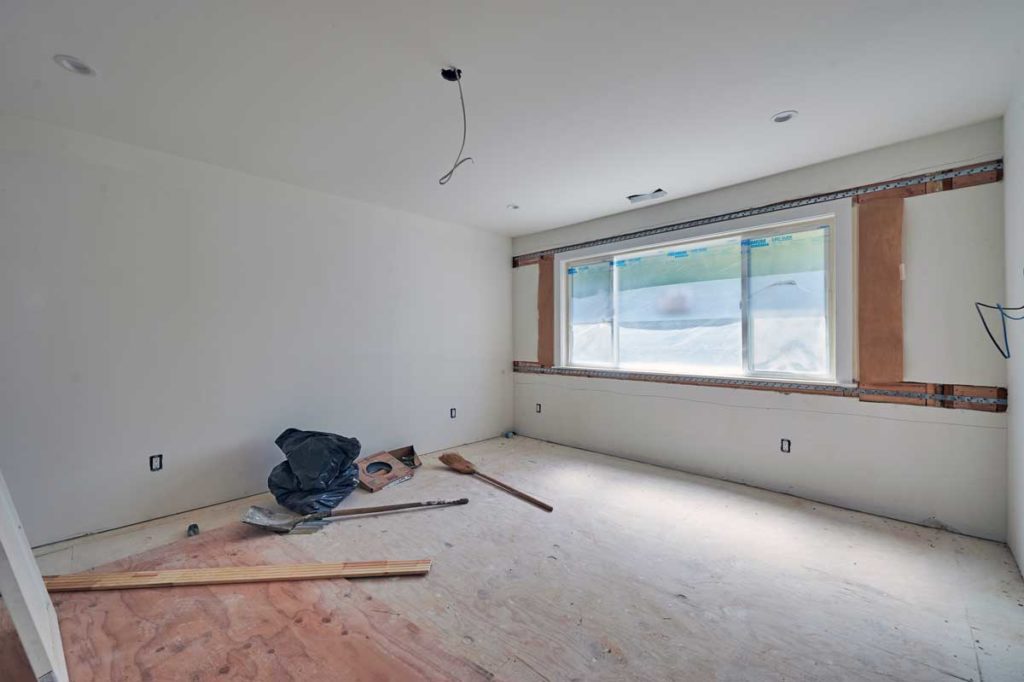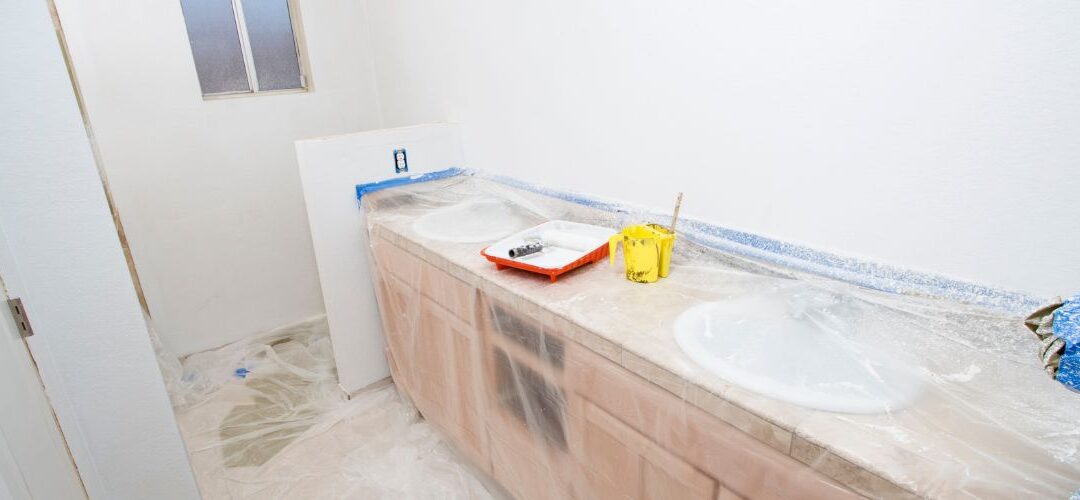If you’re preparing to paint a room in your home, you’ve likely spent some time in the paint aisle at your local hardware store. You’ll find many types of paint here, including primer paint. What is primer, though, and why should you use it? If you use primer, do you need to follow it up with paint?
What is Primer Paint?
First, what is paint primer? This type of paint, sometimes simply referred to as primer, is designed to be the base coat you put down over the current wall color. It’s white, so it essentially erases the current color of paint on the wall. This creates a blank canvas for your topcoat, which can be any color you want. This can be especially helpful if the color on the walls is very dark or if you have a lot of odd stains on the wall that need to be covered.
In addition to covering up the old wall color, primer also helps your topcoat stick to the wall. This creates a more even coat and typically means you only need to do one or two coats to get the color you want. The adhesive in primer also helps keep your walls looking great for longer, so you don’t have to repair them as often. Primer seals up any porous spaces, too, which helps prevent the topcoat from being absorbed into the wall.
Primer is always the first layer you should put down when repainting a wall, a room, or even the whole house. You’ll typically only need one layer of primer paint, although there may be some cases where you’ll need two.
The Benefits of Primer Paint
There are many benefits to using primer to create a basecoat before you put on your topcoat. Here are some of the many reasons why starting with a primer is a good idea.
It’s Perfect for Going from a Dark Color to a Light One
Is your living room a deep purple and your bedroom a dark green? These colors may be perfect for you, but if you’re preparing to sell your home, your real estate agent is likely going to suggest you repaint using more neutral colors. Any time you’re going from a dark color to a lighter one, you’re going to have to do a few coats to fully cover the old paint.
If you use primer first, though, you won’t need as many of these topcoats to hide the old color. You may still need to do a couple of coats just to get the shade you want, but you won’t need four or five. This cuts down on the amount of paint you have to buy, saving you a good amount of money even after you take into account the cost of the primer.
It Creates a More Level Surface
Level surfaces are much easier to paint, especially with rollers. If you have a wall that’s been repaired or patched, it’s likely going to have some bumps and imperfections on the surface. Putting down a layer of primer will help smooth out those imperfections. This also helps with textured walls, although lightly textured walls may have no texture at all after priming them.
Primer Removes Stains Before You Paint
If you have large, dark stains on the wall from water damage, smoke, or other issues, those stains may actually show through your paint. This is especially true if the paint you’re using is a fairly light color. Stains can still show through dark paint, though, so don’t think using a deep blue or a dark red means you can avoid putting down a layer of paint primer. The best paint primer should cover any of these stains, though very dark, large stains may require two coats.
Paint Sticks Better to Primer
As mentioned earlier, paint sticks better to paint primer than it does to regular paint. There are a few reasons for this. First, primer includes a special type of adhesive that helps your topcoat stick to it. This reduces the number of coats you’ll need to put on the wall. This, again, can save you money because you won’t need to buy as much paint.
Second, your walls may be dirty. Even if you don’t see any stains or dirt on them, walls can have small amounts of dust and other grim all over them. Paint won’t stick that well to this dust. Primer, however, is designed to create a uniform surface. It’s thicker than regular paint, so it actually traps that dust and grim within it. This may sound disgusting, but it’s not really that bad. In fact, it’s actually good because it means your topcoat is applied to the clean surface of the primer.
It’s Easier to Change Sheens
Going from something like a gloss or semi-gloss to a matte or eggshell sheen isn’t always easy. It’s similar to going from a dark color to a light color. Using a primer, though, does make it a much easier task.

You Can Paint Brick and Other Porous Surfaces
Do you want to paint the exterior brick of your home or the brick of your fireplace? If so, you’ll want to use a brick primer. Brick is a very porous material, and any paint you put on it will soak right in. You’ll need multiple coats to get a finish that you like. Using brick primer, though, will make the process much easier. The primer will seal up the pores in the brick, so the topcoat will sit on the surface like it should. Unfinished wood is another porous material that should have a primer coat applied before being painted.
Primer Helps Repeal Mildew
Another benefit to using primer is in areas that tend to get very humid. Residential painters often make use of primer where plumbing is involved like a shower to help prevent mildew. A commercial painter might make heavy use of primer in any business that tends to need a humid atmosphere, such as a nursery or a hair salon. Primer also traps and seals in any spores of mildew that happen to be on the wall at the time of painting.
Even with using a primer, you’ll also want to scrub the wall, especially if there is a good amount of mildew or the possibility of more serious mold in the space. If there is a good amount of mold, look for an oil-based primer. These primers are better at neutralizing mold.
Should You Use Paint and Primer in One?
In addition to standard primer, you may see a product labeled paint and primer in one at the store. Should you use this option? There are some pros and cons to it. It can save you time and even some money if you’re covering a lighter color paint and aren’t changing the sheen. If you’re going from a dark color or to a lower sheen, though, this isn’t the best option. You’ll likely still need to do several coats.
Does Primer Work on All Surfaces?
While most homeowners may not have much to paint that isn’t drywall, stucco, or brick, a business that hires a commercial painting service may need to have other surfaces covered. Primer works on just about everything. However, you may need a special type of primer. For example, if you’re painting metal, you’ll want to look for a primer formulated to adhere to metal before you paint it. A commercial painter will be able to help you select the right primer for metal and for other materials.
Should You Use Primer on the Exterior?
Yes, you’ll likely want to put down a coat of primer if you’re painting the exterior of your home. Many residential painting services will ask you if you want to do this. This is especially true if the exterior has a lot of flaking paint or other damage. The primer will help smooth over the surface, making it easier for the new coat of paint to adhere to it. If you want a painted brick house, you’ll also need to prime the brick before painting.
Using Primer in Commercial Spaces
Many commercial painting services will recommend primer, too. You’re going to be purchasing a large amount of paint to cover a retail space or multiple offices, so you want to put down as few coats as possible. Primer will help with that. It’s also very helpful to use when painting any industrial or manufacturing area that may have stains on the wall. In nearly every instance, using a primer will lower your overall paint costs, and that’s beneficial for any business.

JLM Painting Can Help You Prime and Paint Any Surface
If you’re in need of a commercial or residential painter in Sonoma or Marin County, JLM Painting is here for you. Our team has years of experience painting homes and businesses. As a professional residential painting service, we can assist you with painting the interior and exterior of your home. We understand how to read HOA painting guidelines, too. When you’re ready to paint, contact JLM Painting at 707-782-3652.

